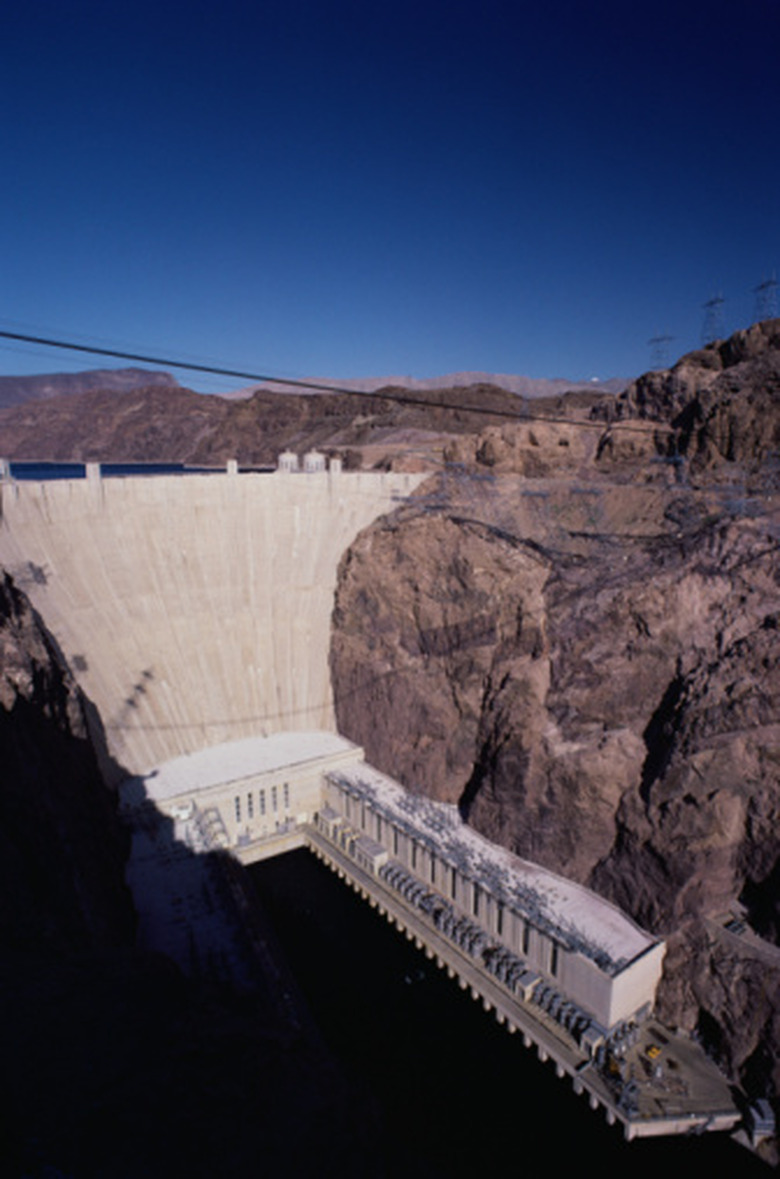How To Calculate The Force Of Moving Water
Hydropower uses water force to operate machines and generate electricity. Engineers must calculate the force of the moving water to determine the available kinetic energy of the water flow. A simple example of using water force is the old-fashioned water wheels used to operate machinery that ground grains into flour. Once scientists determined electricity could be generated using the natural force of water, dams were built to harness the power. In 1881, the city of Niagra Falls used hydropower to operate the street lights. Today, many countries around the world use the force of moving water to generate electricity.
Step 1
Choose a calm, straight area of the water that is at least 20 feet long. Drive a garden stake into one side of the stream and drive a second stake directly across from the first, on the opposite side. Run a string from one stake to the other and mark the string at four equal intervals.
Step 2
Measure downstream 20 feet and drive another two stakes into the stream banks. Tie a string from one stake to the other. Mark this string at four equal intervals, as well.
Step 3
Float a buoyant object, such as a section of 2x4, plastic jug or tennis ball, from the first markers to the second markers. Measure the time it takes for the object to get from the starting point to the second set of markers. Do this three or more times for more accurate data. Calculate the average of the times by dividing the total stop watch times by the number of times you timed the process. Record this average time in feet per second.
Step 4
Calculate the average depth of the stream by measuring the depth of the water at each of the marks on the first string. Add the measurements together and divide by four. Do this same process at the point of the second string. Record the average depths of the stream at both marked areas.
Step 5
Calculate the area of the stream by adding the average depths and dividing by two, then multiplying result by the width of the stream. Record this as the average area of the stream.
Step 6
Use the formula F=ALC/T to calculate the force of the moving water. F=force, A=average area, L= stream length (20 feet), C=coefficient for the bottom of the water bed, and T=time traveled. The coefficient used by the Environmental Protection agency is 0.8 for streams with a rocky bed and 0.9 for streams with a muddy bed.
Things Needed
- Stop watch
- Measuring stick
- Buoyant container
- Twine
- 4 Garden stakes
- Calculator (optional)
References
Cite This Article
MLA
Richards, Julie. "How To Calculate The Force Of Moving Water" sciencing.com, https://www.sciencing.com/calculate-force-moving-water-8274685/. 24 April 2017.
APA
Richards, Julie. (2017, April 24). How To Calculate The Force Of Moving Water. sciencing.com. Retrieved from https://www.sciencing.com/calculate-force-moving-water-8274685/
Chicago
Richards, Julie. How To Calculate The Force Of Moving Water last modified August 30, 2022. https://www.sciencing.com/calculate-force-moving-water-8274685/
